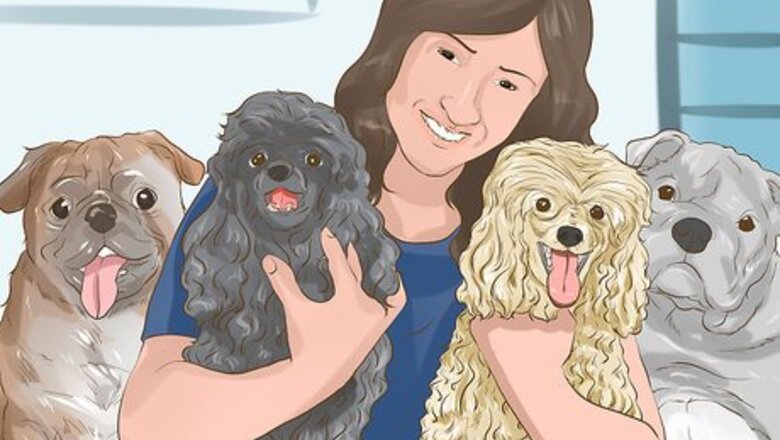
views
X
Research source
Working with a Current Breeder
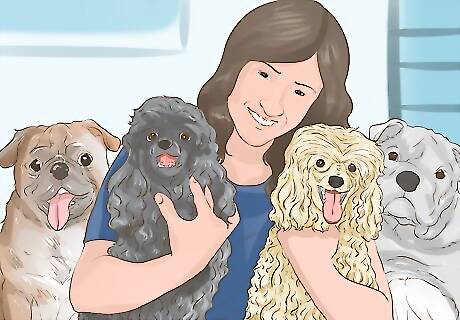
Find a reputable breeder. You want to make sure you've found a breeder who will not only offer you quality dogs to breed, but who will also provide you helpful tips. Most importantly for you when it comes to breeding your own dogs, having a good relationship with an existing breeder can be extremely helpful in developing an ethical and successful breeding program. Clean facilities are extremely important. This shows the dogs are well cared for and comfortable, and that the breeder invests time in facility maintenance. The number of litters a breeder produces per year can also be indicative of whether their breeding programs are ethical. Dogs who are overbred are more likely to die at a younger age, and they often produce sick puppies. Ask the breeder, "Do you allow the dam to rest for one heat between mating?" Ask the breeder for specific information including pedigree, how long they've been breeding, and how many litters the dam whose puppy you're considering has had. Expect honesty when the breeder is answering questions. For any pet buyer, a reputable breeder should want to offer clear, honest information, but for a potential pet owner who also wants to breed dogs, this is extremely important. Misinformation from the original breeder may lead to complications for your breeding program. If a breeder avoids answering or changes their answers, point this out. Say something like, "Last time I was here, you said this was her third litter. Today you said second, which is accurate?"
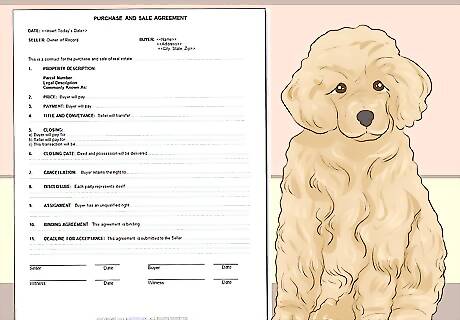
Understand purchase contracts. This documentation is how the breeder provides accurate information on the poodle's pedigree and health history. Contracts should also include pricing information, trial period agreements, and return and refund arrangements. Request at least three generations of pedigree to ensure the dog you choose does not have any of the common inherited diseases in its bloodline. Know what the fair pricing is before you buy. Poodles can be priced anywhere between $500 and $2500. The cost depends on a number of different elements, including the pedigree of the dog's parents, any AKC recognition of the puppy you're buying, and how closely the poodle meets the breed standard. Before paying for and taking home the poodle of your choice for breeding, ask about the trial period, refund, and return policies. If for some reason, you change your mind about the poodle you've chosen, it's important that you have clearly outlined these agreements to make sure you can get your money back, if you change your mind about the puppy you've selected, find a comparable poodle at a better price, or are suddenly able to purchase a puppy you liked better who was previously claimed.
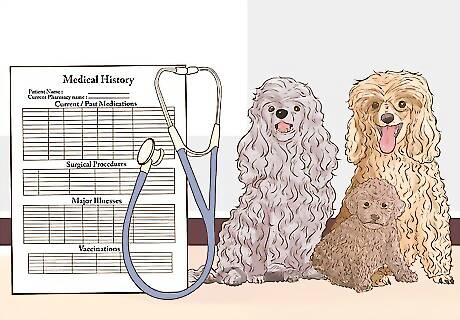
Request a health history report. This is necessary for both of the parents and the puppy you're interested in. Knowing the hereditary illnesses that frequently effect poodles and ensuring they have been tested for is essential. These common illnesses and tests All poodles that are bred should have the CERF test for inherited eye diseases Make sure your poodle and its parents received testing for von Willderbrand's disease. Ensure OFA testing for hip and elbow dysplasia. All poodles should undergo sebaceous adenitis test for skin disease biannually Testing for Progressive Retinol Atrophy (PRA) should be completed prior to purchase Females should be tested for brucellosis, a common disease contracted during mating.
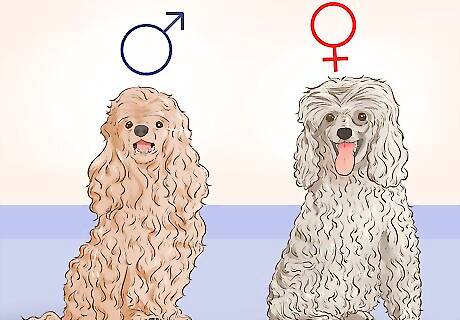
Decide if you want a male, female, or both, for breeding. If you want to be involved in the fast paced world of poodle breeding without having to deal with the daily work required, owning a male dog may be for you. If you'd rather be involved with the breeding process from start to finish, owning a female dog may be the right choice. You should consider owning a breeding pair, if you have the space and time to devote to care. If you own a male dog, you'll only have to be involved in the actual mating process. There's no need for multiple, often costly veterinary visits. You simply leave the male dog or sire with the female's owner for a few weeks two or three times a year for mating. Each male poodle receives a stud fee between $500 and $2500. If you own the female poodle called a dam or bitch, you'll need to care for the male and female dog during the mating period, and provide full veterinary treatment and at-home care throughout pregnancy for the dam. However, apart from the stud fee between $500 and $2500, the full profit associated with breeding and selling poodles goes to the owner of the dam. If you own a breeding pair, you'll be able to keep the full profit of the poodle breeding and sales process, but you'll also be responsible for the cost of caring for both the male and female dog. If you reach the point where you're doing well with a breeding pair, you may want to consider buying another breeding pair to grow your business if you have the time add space to accommodate two additional dogs.
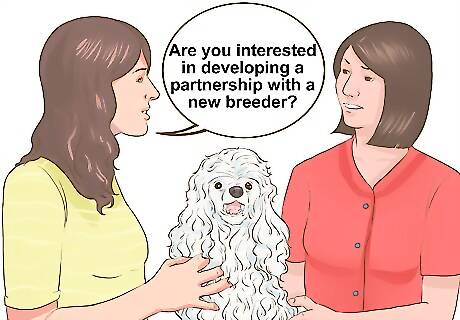
Consider partnering with a breeder. If you've found a breeder you liked working with to purchase your puppy, ask them about the possibility of partnering. If you've chosen a male or female dog, you may want to breed with one of their dogs. If you have a breeding pair, you can ask them for tips or mentorship when it comes to running your breeding program. When talking to a potential breeding partner, ask, “Are you at all interested in developing a partnership with a new breeder?” If you already have a breeding program, you can ask the breeder, “Do you have a male or female do who would be available for breeding with my dog?” You can also consider saying something like, “You run a very ethical breeding program here. May I ask you for recommendations and assistance as I start developing my own breeding program?”
Picking The Right Dog
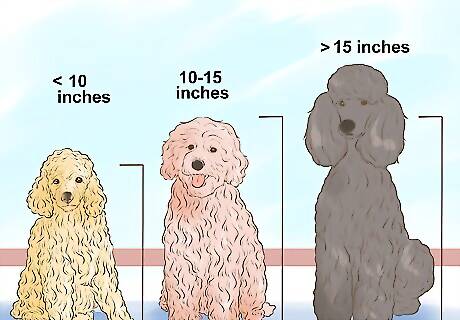
Choose a poodle size that meets AKC standard. It's important to know the size and shape of the toy, miniature, or standard poodle you're interested in and how they fit into the American Kennel Club (or parallel organization in other countries) standards. Regardless of the type of poodle, the height from ground to the tip of the shoulder should be the same as the length from the breastbone to the tailbone. Toy poodles should be no taller than ten inches at the shoulder. Miniature poodles are between ten and fifteen inches at the shoulder. Standard poodles are any poodles more than fifteen inches at the shoulder.
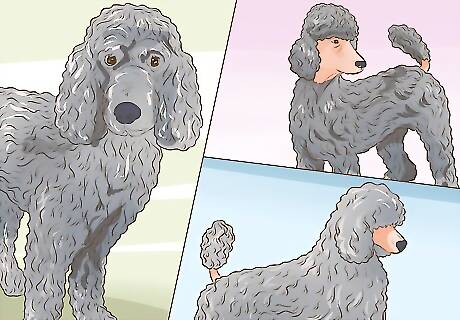
Familiarize yourself with coat colors and consistency. Poodles of all sizes have similar coat styles. Naturally, the poodle's coat is curly, coarse, and dense. The AKC standard also allows for poodle hair to be corded, hanging in long, varying lengths in tightly wound cords. Poodles are available in a variety of colors, including blue, gray, silver, brown, café au lait, apricot, and cream. Regardless of the coat color, the poodle's coloring should be even and consistent at the hairline. Knowing a poodle's coloring can be helpful if you want to breed a more specific color of poodle. For instance, if you want to breed more brown poodles, you might invest in a brown poodle for breeding.
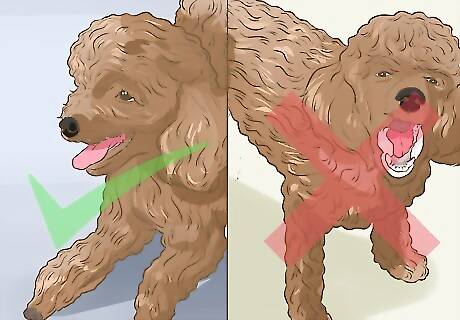
Learn the typical behaviors of poodles. This is a highly intelligent breed of dogs who are very active, carry themselves with dignity, and have a great sense of humor. If you notice any characteristics different from those outlined in the AKC standards or you notice snippy or shy behavior, you may want to look for a different poodle. While dogs that deviate from the standard behavior are not necessarily bad dogs for the right person, it's important to breed only the best personality characteristics to improve the overall quality of your puppies. Poodles that respond to new sights and sounds with curiosity are preferred over those who shy away from new stimuli. Poodles should interact with other dogs in a playful but non-aggressive manner. For instance biting and nipping at the sides or haunches with tale wagging is considered playful. Lunging, growling, and biting the face or neck are aggressive behaviors. Dogs should allow you to pet them, view their teeth, and pick them up without showing aggression or fear.
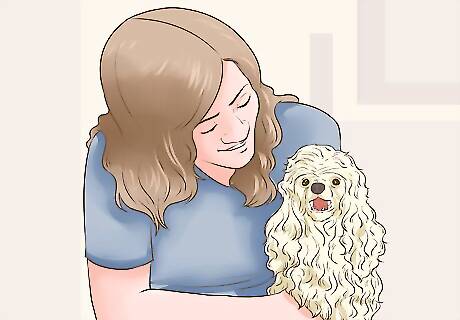
Spend time with puppies. Make sure to take as much time as you need to get to know a puppy before making the investment. This is important whether you're selecting a dog for a pet or for breeding. You're going to need to spend a significant amount of time with the dog, so choose one who will fit into your family and routines. Visit the poodle puppies at various points before purchasing. Watching how the dogs develop in size and personality will help you better estimate how they will behave in the future. Take the dog home for a trial period whenever possible. This can usually be written into a purchase agreement. This trial period allows you to get to know how the dog will behave outside of its current environment. Ask if you can walk the puppy or take it to a dog park. Seeing how a poodle responds to other people and dogs will help you understand how it will behave. A dog's temperament is a very important aspect of breeding.


















Comments
0 comment